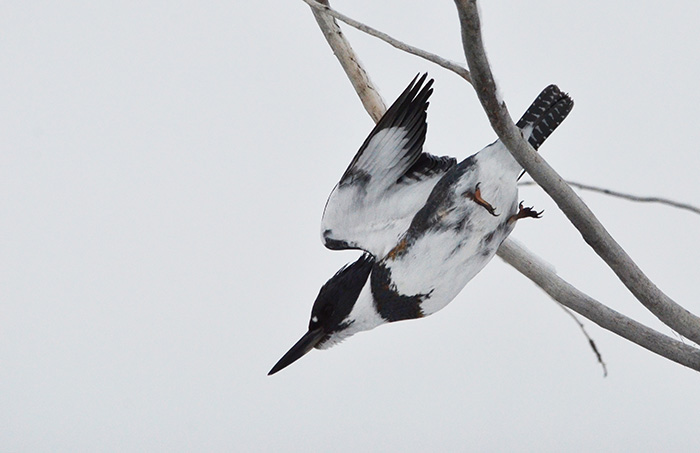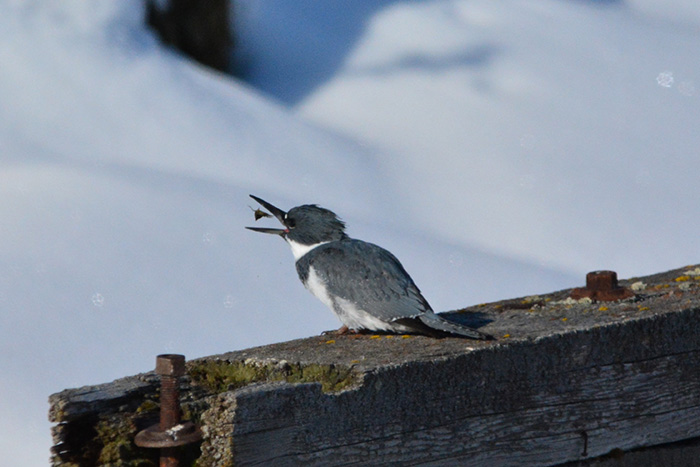SCHIESS: Kingfisher dives to survive
Published at | Updated at
Perched on an old pillar, a Belted Kingfisher kept a keen eye on the shallows of the ice-edged warm spring near Chester Dam. With an explosion of blue, it flew directly to the shallows, plunging into the water, and disappeared from sight. A few seconds later, it emerged holding a large water bug in its dagger-like bill and flew back to its perch.
The assassin pounded the trapped insect against the pillar; but it still moved, so it tossed it into the air and swallowed it whole. As it rested, the kingfisher began preening each wet feather on his breast before the frigid cold froze them. The unreachable shaggy crest soon was ice covered, reminding me of a modern teenage boy with a badly-waxed faux hawk hair style.
Not long after the first dive another bug was located, harvested and eaten. The only difference was the hairdo was not so wild after the second dive.
Their keen eyesight is the key to their success in harvesting food under water. Kingfishers have trichromatic vision much like humans only six times more powerful. This reduces glare from the surface of the water allowing them to see their target clearly without refraction.
Most kingfishers will hover over water once a meal is located before diving. In the dive they will either stun, spear or grab the prey and are extremely accurate in their dives. They swallow all their food whole and cough up pellets of the non-digestible parts much like owls do.
After a male and female have established a pairing, the work of building a nest becomes an intense activity. Both start building a three to six foot long tunnel in a shear bank by flying into the bank with their chisel-like bill until a ledge is formed. Then with their bill as a pick and feet as shovels, they will take from one to three weeks to finish the tunnel and a football sized chamber for the nest. Some overly energetic pairs have built tunnels up the 15 feet long.
The tunnels gently rise and it is believed this is to save the nest if the river or lake rises. Often times the tunnels are also shared with swallows that will dig side chambers to nest in.
Both parents take turns incubating the eggs during the day, but only the female sets on them at night. The male has a nearby man-cave dug out to spend the nights.
The nestlings develop a love for fish early in life as they are raised on regurgitated fish. Data shows that about six young are hatched and raised with the parents both working full time for them. Each parent must harvest about 2.6 fish per hour to keep their babies happy.
Once they can fly, the babies are forced to harvest their own food. They learn quickly that a full belly means a wet head. To be taught, the parents will stun a fish and float it by the branch the young are sitting on. It is an intense education as the young are forced out of their parent’s territory about ten days after they can fly.
The Latin name for the kingfisher (Alcyon) comes from a tale of a mythical Greek woman who mourned for her husband who had perished in a shipwreck. The Greek gods took pity on her, turning both of them into kingfishers to exist together for the eternities.
Living the Wild Life is brought to you by The Healing Sanctuary.






